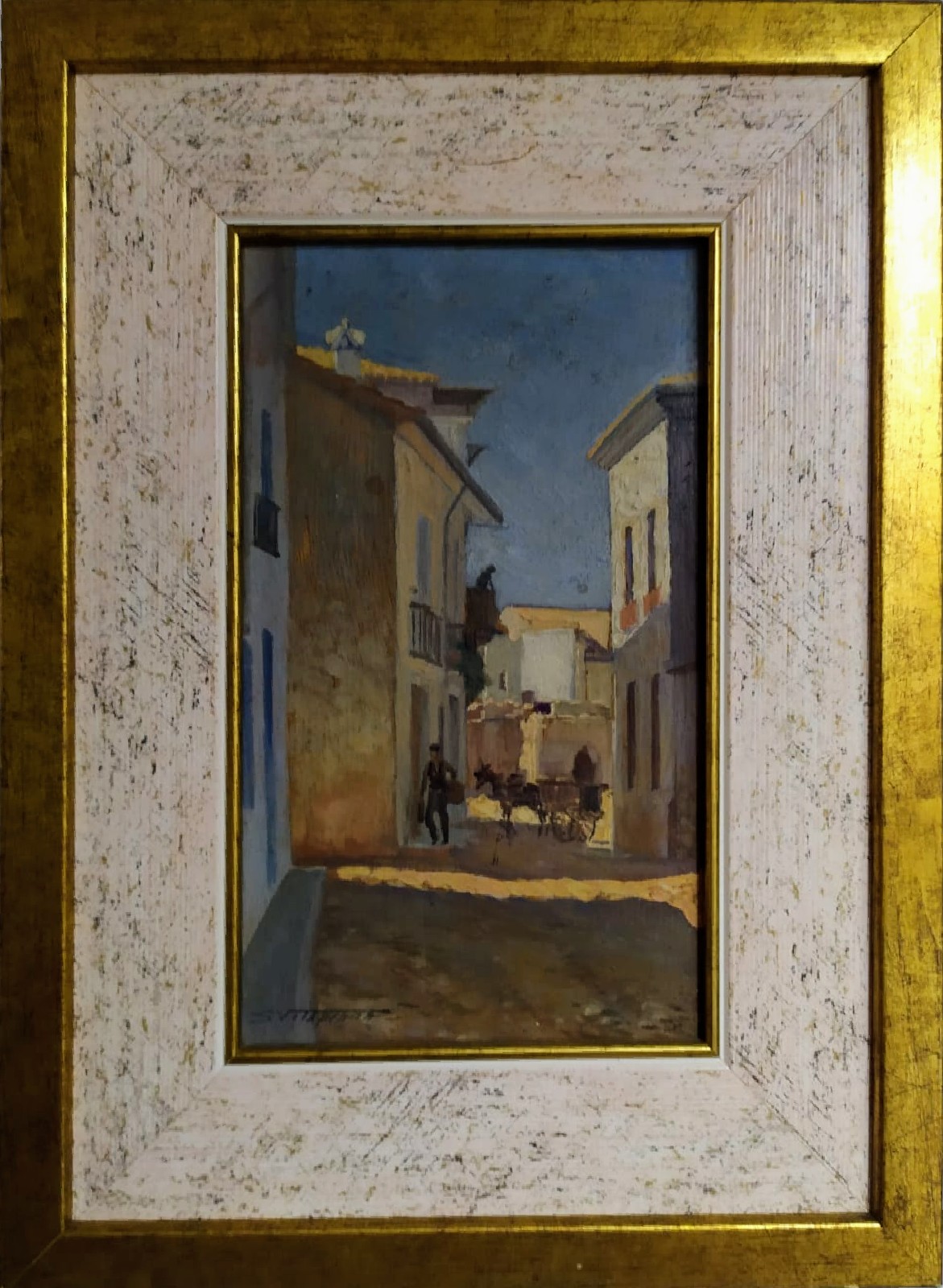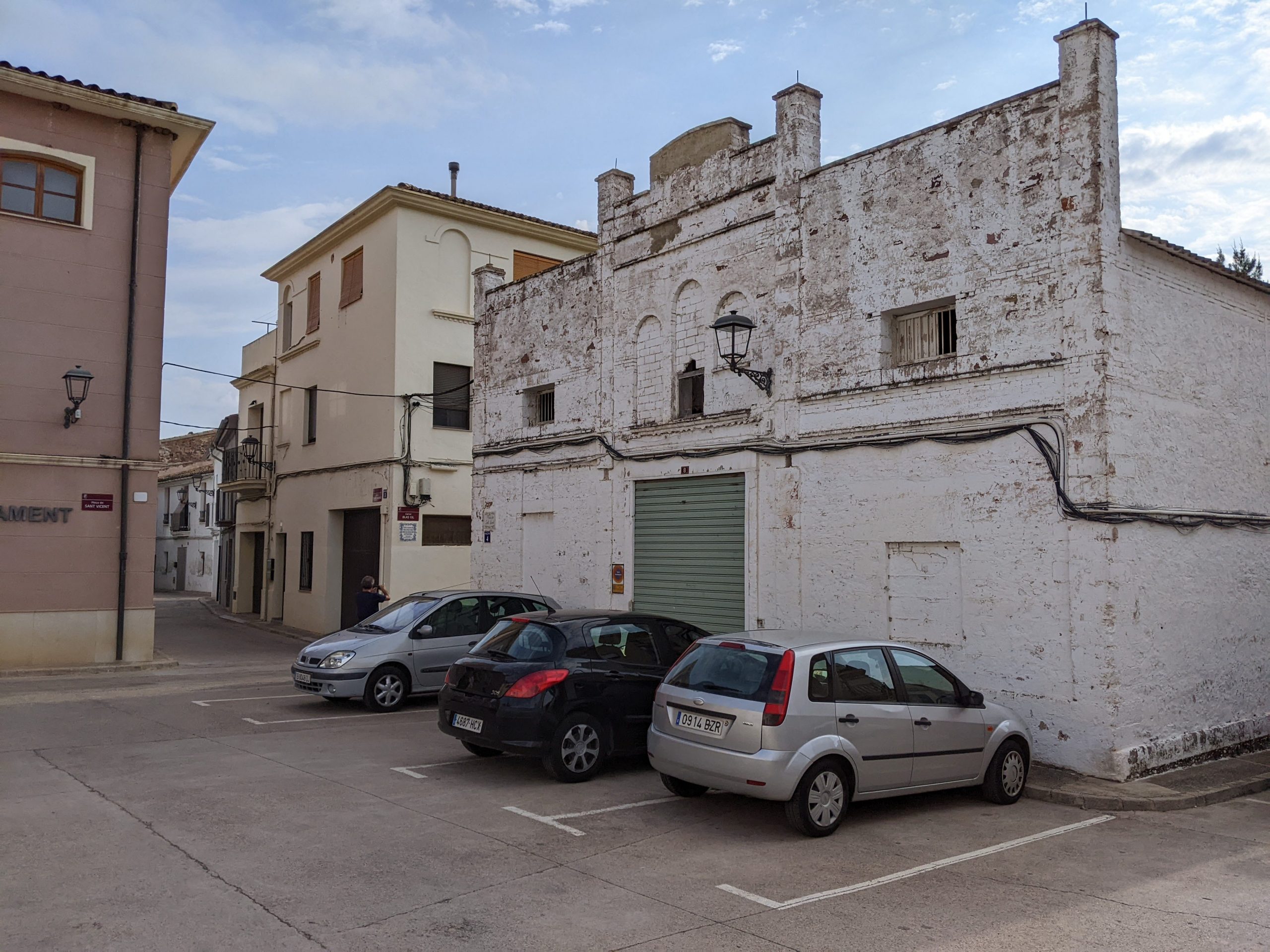Houses and Streets
UB119
Square, Town hall, and Cinema (Sant Vicent Square)
The square did not have the shape we know today and there were some houses in the center (see Salvador Vilaplana’s painting). The current configuration is determined by the bombardment of 1938, when part of the houses there were demolished. In 1939, already after the war, the rubble was removed, and it acquired practically the current configuration. The line of the square corresponding to Hort Street (Orchard) was different, with some constructions that fit inside it. It will be in 1955, with the expropriation of a neighbor’s property that will acquire the current configuration.
Town hall
At least since 1611 the Town Hall has been in the space it occupies today, although it does not have to correspond exactly with the current shape and surface. But being the communal building, there have also been various activities in it.
1. At least at the end of the 19th century, the children’s school was in the building of the current town hall, and it was entered through this square. At that time, the entrance to the City Hall was through the Palillo square.
The operation of the school has been verified since 1781. We do not know if at that time the school was already located in the current town hall building. It will last until 1948, when it moves to Glorieta Square.
2. The telegraphic service began operating on July 9, 1934. Destroyed by the bombing of 1938, it was restored on May 1, 1941. The service was in the Town Hall building. Telegraph operators were Claudio Cotolí Lostado (25-I V-41 to 27-VIII-44), José Melià Cotolí (1954) and Bernardino, from Ribarroja, a nearby town (50-60s).
3. Downstairs from the Town Hall, in 1960, the municipal corporation bought an Invicta brand television, the second in town. It was the communal TV Room.
4. From an undetermined date it was the headquarters of the “Germania de Llauradors” (Farmers’ Germanies), which has had several names, the last Agrarian Chamber. There was also the delegation of the Agricultural Extension Service, from until 2002.
5. Between the years 1994 and 2002, the Post Office was installed in one of the Town Hall buildings.
6. The basements of the City Hall were used as sanitary facilities during the bullfighting celebrations. They took place between 1954, when they came from “Plaça de l’Església” (Church Square), until 1969, when they moved to the streets.
Cinema
In the Cinema building -formerly known as the house of “Tio Mostazo” (referring to Pedro Mostazo Muñoz, a retired soldier from Malaga, who died in Algímia on February 16, 1916)- there have been several services.
1. In 1924, Francisco Zarzoso , from Sogorb, set up a brokerage here, which changed in 1934 to Avinguda de Valencia (Valencia Avenue).
2. From that year until the (Spanish Civil) War, the pharmacy was here. Separated from that of Estivella (a nearby town), her official birth would be on August 4. On the 16th, a merit competition was established for a month to fill the position. The first pharmacist will be “don Conrado “.
3. Francisco Gil Senis (Don Paco) installs a cinema, inaugurated on September 8, 1940 with the film “Morena Clara”, from CIFESA. The place was called “Teatro Cine Algimia de Alfara” (Teather Cinema Algimia de Alfara). In 1945 , Algímia attended the first technicolor performance, ” Blancanieves y los Siete Dwarfs” (Snow White and the Seven Dwarfs), by Walt Disney.
In February 1946, “Don Paco” leased the cinema to Joaquín Fuentes, a merchant from Almenara. For this reason, the name changed, which became “Cine Moderno” (Modern Cinema). But even though it was no longer called theater, there were also variety shows and dances. The lease ended on the first Sunday of October 1950.
With the same name, “Cine Moderno”, it continued with the second tenant, Antonio Aguilar, from Sot de Ferrer, who had it from the second Sunday of October 1950 to the first Sunday of May 1954.
On the second Sunday of May 1954, the cinema resumed “Don Paco”, with two changes. The cinema was renamed “Cine Goya” and, in addition, incorporated a panoramic screen, that is to say, it was no longer reflected on a canvas, which made the quality bad, but directly on the wall.
In 1967 “Don Paco” leased it to Federico Aparici, until it closed definitively in January 1985, being “Jesus Christ Superstar” the last movie on screen.
4. After the war, the rector Ramón Bernial organized the Visit of the Three Kings to the town on 6th January J, a tradition that still continues. At that time, on the Day of the Kings, after mass, at the ” Teatro Cine Algimia de Alfara”, the Adoration of the Kings was performed with costumed neighbors, and finally the gifts were distributed among the children.



